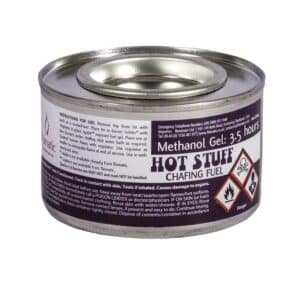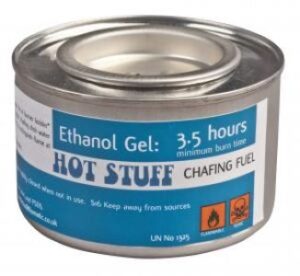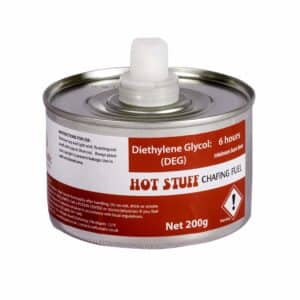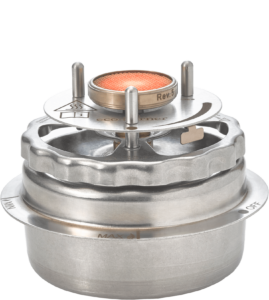In the world of catering and hospitality, maintaining the perfect temperature for food is an art form. Chafing fuels play a crucial role in this process, providing the necessary heat to keep dishes warm and appetizing. However, not all chafing fuels are created equal. In this blog post, we’ll explore four popular options – Methanol Gel, Ethanol Gel, Diethylene Glycol (DEG), and EcoBurner – and delve into the pros and cons of each.
Methanol Gel:
Pros:
High Heat Output: Methanol gel produces a substantial amount of heat, ensuring that your food stays warm for an extended period.
Cost-Effective: Methanol gel is often more affordable than some other fuel options, making it a budget-friendly choice for large-scale events.
Cons:
Odor: Methanol gel can produce a noticeable odor during combustion, which may impact the dining experience in more intimate settings.
Toxicity: While generally safe when used properly, methanol is toxic and should be handled with care.
Ethanol Gel:
Pros:
Clean Burning: Ethanol gel burns cleanly, leaving minimal residue and reducing the need for extensive cleaning after use.
Eco-Friendly: Ethanol is a renewable resource, making ethanol gel a more environmentally friendly option.
Cons:
Lower Heat Output: Compared to methanol gel, ethanol gel may have a slightly lower heat output, which could affect its suitability for certain applications.
Diethylene Glycol (DEG):
Pros:
Steady Flame: DEG provides a consistent and steady flame, ensuring a reliable heat source for extended periods.
Low Odor: DEG typically produces a low level of odor during combustion, contributing to a more pleasant dining environment.
Cons:
Non-Renewable: DEG is a synthetic fuel and is not derived from renewable sources, which may be a consideration for those seeking eco-friendly options.
Flame Color: Some users may find the flame color less appealing compared to other fuels.
EcoBurner:
Pros:
Adjustable Flame: EcoBurner offers adjustable flame settings, allowing for precise temperature control and energy conservation.
Clean and Odorless: This fuel option burns cleanly and without significant odor, enhancing the overall dining experience.
Windproof for Outdoors: EcoBurner is designed to be windproof, making it an ideal choice for outdoor events where other fuels might struggle to maintain a steady flame.
Cons:
Higher Cost: EcoBurner may be more expensive than traditional gel fuels, which could impact the budget for larger events.
Summary
Choosing the right chafing fuel depends on various factors, including your specific catering needs, environmental considerations, and budget constraints. Whether you opt for the high heat output of Methanol Gel, the eco-friendly appeal of Ethanol Gel, the steady flame of DEG, or the precision control of EcoBurner, each option has its unique set of advantages and drawbacks. By understanding the pros and cons of each chafing fuel, you can make an informed decision that ensures your culinary creations are served hot and delightful at every event. Give us a call on 01536 481977 if you’d like to learn more.




